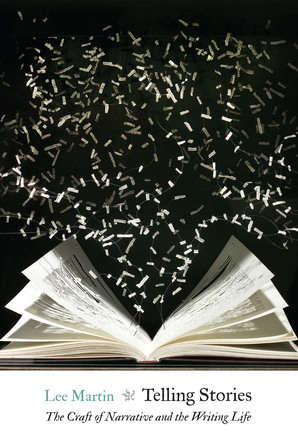 Popular Mechanics was the only magazine my father ever read. In it were clever plans, such as turning a metal lunchbox into a radio, a VW Beetle into a travel trailer, and a coffee can into an electric doghouse heater. Actually, Dad made the latter, complete with a switch for turning the heater on and off from the house.
Popular Mechanics was the only magazine my father ever read. In it were clever plans, such as turning a metal lunchbox into a radio, a VW Beetle into a travel trailer, and a coffee can into an electric doghouse heater. Actually, Dad made the latter, complete with a switch for turning the heater on and off from the house.
Like Dad, I was pretty good at following directions. I could bake just about anything in a cookbook, which gave me the idea that I could do anything—even write great short stories—if I just had the right directions. I was young and naïve when I began searching for good writing craft books. Most were disappointing, giving general advice, such as put your butt in the chair, write every day, read books, make the dictionary your friend, and so on. I really wanted specific directions.
I gave up searching for the writing cookbook, until I found Lee Martin’s Telling Stories: The Craft of Narrative and the Writing Life. It’s not really a writing cookbook. Actually, it’s better. In it are eighty brief chapters of solid advice for telling good stories—and some—not all—have step-by-step directions.
Martin begins with advice on how to create a great opener. He uses, as an example, the opening to Raymond Carver’s famous short story “Cathedral.” The narrator anxiously awaits the arrival of his wife’s former colleague who is blind. The narrator has never known anyone blind—only characters in movies. As his anxiety mounts, so does the reader’s, who’s worrying what will happen to this poor blind man when he finally arrives.
To create such a tension-filled beginning, Martin advises, “Write a line that’s already moving forward, that contains the story’s premise. Then establish the perspective of the main character so we know his or her position, as in: A blind man in my house was not something I looked forward to.” It’s simple, but powerful and strategic, as are the other lessons in this book.
While Martin gives some rather detailed step-by-step prompts, they don’t necessarily lead to a complete story soufflé. Mostly they’re short tricks and tips for building character, scene, detail, dialogue, and more. These exercises feel fresh and original, stemming, I assume, from Martin’s deep well of writing experience and literary knowledge. He is, of course, a premiere storyteller (Such a Life, Bright Forever), teaches in the MFA program at Ohio State University, and has been teaching writing for thirty-six years.
In this book, I’ve dog-eared several sections that I will revisit. One is “Using Photos in Memoir.” In my own writing classes, I ask students to bring in personal photographs to examine closely for details and deeper meaning. As Martin says, a photograph “not only immerses you in the time period; it also provides an emotional connection between you and the people about whom you’re writing.” He gives a five-step guide for not only looking deeper into the photo, but analyzing it for scene, emotion, and metaphor. His way of guiding writers through this exercise is far better than mine, and I hope to borrow some of his ideas the next time I lead students through this exercise.
Another section I’ve referred back to is “Connecting the Particulars.” I love lyric essays, but struggle to write them. Martin more or less pulls back the curtain, giving us a glimpse at the foundation beneath the poetry. He leads readers through a step-by-step exercise, guiding writers to pull together dissimilar objects and people and mix them with abstract ideas. Initially I found this exercise a bit daunting and didn’t expect anything would come of it. However, once I brought my object, person, and idea together, there was a palpable resonance on the page. I had something—just a start—but often that’s all a writer needs to get going. That’s why this is better than a cookbook.
Martin combines writing tips with examples from literature and his own life and teachings. It’s a clever, warm-hearted book for writers of fiction or creative nonfiction. It could be used in creative writing classes or kept on the desk for those days one needs a little shot of inspiration.
I’ve learned from Martin’s website, he’s a fan of this quote from Isak Dinesen: “Write a little every day, without hope, without despair.” Throughout this handy, inspirational book, Martin gently urges writers forward and not to give up.
____
Debbie Hagan is book reviews editor for Brevity and author of Against the Tide (Hamilton Books, 2004). Her essays have appeared in Harvard Review, Hyperallergic, Pleiades, Superstition Review, Brain, Child, and many other publications. She’s a visiting lecturer at the Massachusetts College of Art and Design.
